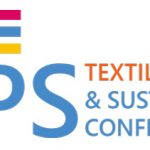T. BASHIR, M. SKRIFVARS
School of Engineering, University of Boras, Boras, Sweden;
N.-K. PERSSON,
The Swedish School of Textiles, University of Boras, Boras, Sweden
Electroactive textile fibers are being widely used for smart textile applications, such as, medical, military and energy generation applications. For integrating electrically conductive fibers in wearable applications and getting better results, fibers should be highly conductive, soft, flexible, durable and resistant to different solvents. We have produced textile based electrically conductive fibers by coating different textile yarn fibers (viscose, polyester) with conjugated polymer, poly (3,4-ethylenedioxy-thiophene) (PEDOT). We have employed an efficient technique, called oxidative chemical vapor deposition (OCVD) polymerization for this purpose. OCVD is a solvent free technique to form uniform and thin layer of different conjugated polymers on different substrates. It was investigated that relatively good electrical and mechanical properties could be achieved with viscose and polyester yarn fibers and roughly 15 S/cm conductivity was achieved in our initial experiments. Scanning electron microscopy, FT-IR analysis, TGA, and mechanical testing was performed to characterize the PEDOT coated fibers.
In order to find out the stretch sensing properties of coated fibers, the knitted structures of these fibers were prepared and variation in electrical properties at tension and relaxation state were investigated. A washing cycle was also performed on knitted structures to determine the durability of PEDOT coatings on viscose fibers. These PEDOT coated textile fibers could be used in different smart textile applications such as stretch sensors, pressure sensors, and sensors for ECG measurements and as protective clothing for EMI shielding effects. It is also possible that these fibers could be used as solar cells and fuel cells demonstrators.
Back to the Abstracts of the
4th Intl Conference “Smart Materials, Structures and Systems”





